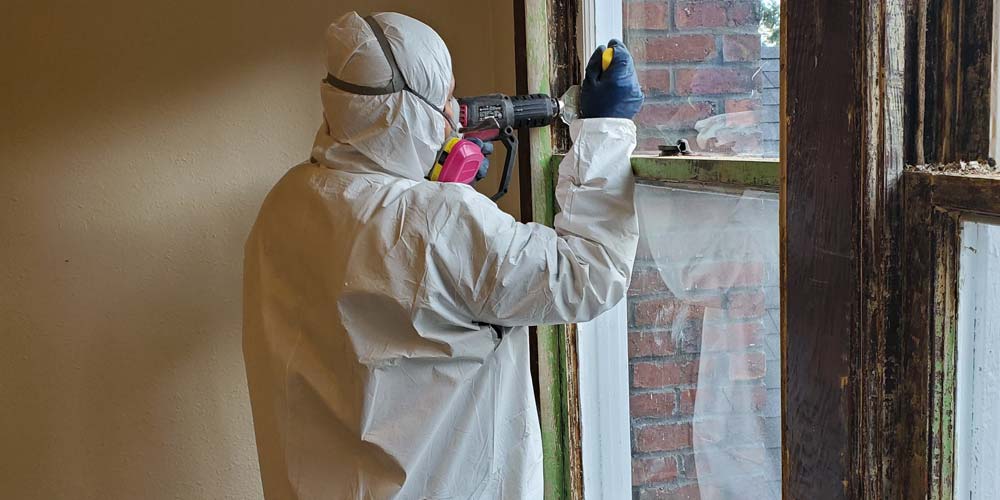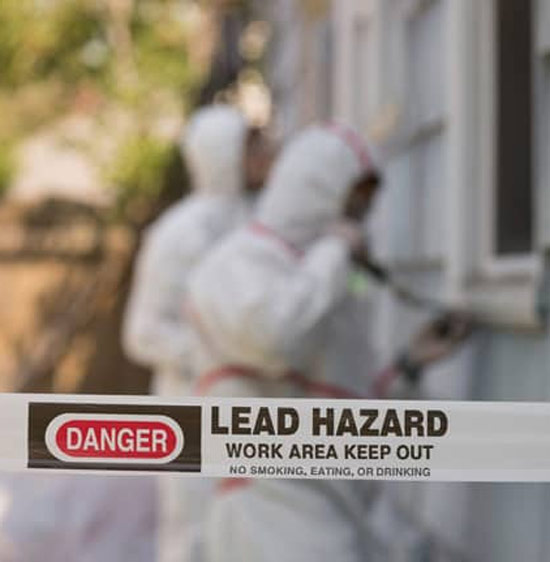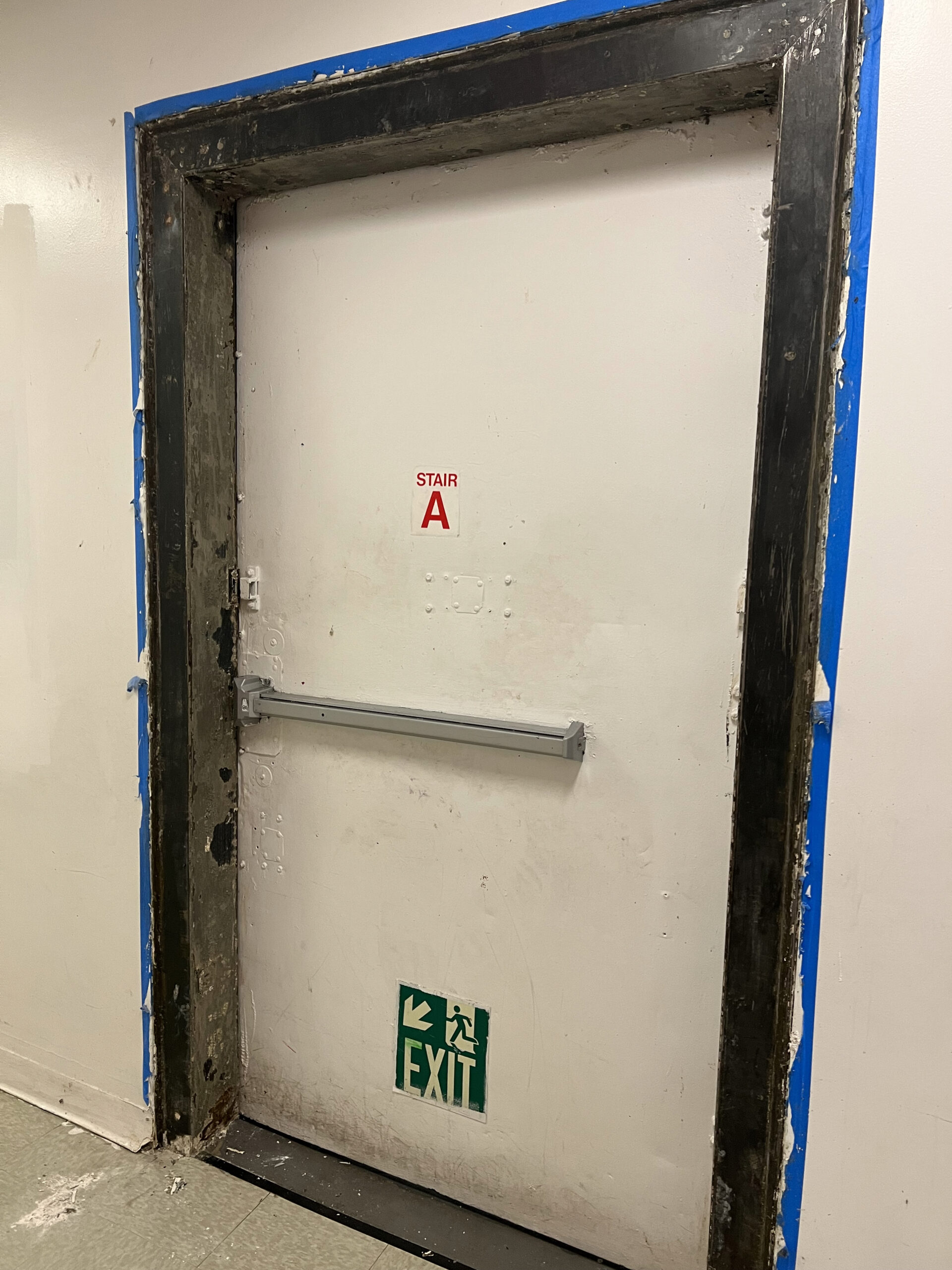Lead Removal Contractors-- Knowledgeable Specialists for Lead Abatement
Lead Removal Contractors-- Knowledgeable Specialists for Lead Abatement
Blog Article
Comprehensive Overview on Effective Lead Offense Elimination Techniques
In the world of environmental safety and security, attending to lead offenses demands a meticulous and organized technique. This comprehensive overview begins by highlighting the critical first steps of identifying lead dangers through sophisticated assessment and testing methods. The overview elaborates on the importance of sticking to rigid security protocols throughout the elimination process, consisting of the usage of appropriate PPE and isolating affected locations.
Identifying Lead Threats
Determining lead threats is an essential initial step in minimizing the risks linked with lead exposure. Lead, a hazardous steel, can be present in different ecological mediums, consisting of paint, soil, water, and dust. It postures severe health and wellness threats, particularly to kids and expectant ladies, bring about neurological damage and developing hold-ups. As a result, precise identification of prospective lead resources is important for efficient removal.
The initial phase in recognizing lead hazards involves comprehending typical lead sources within the developed atmosphere. Structures developed before 1978 are particularly vulnerable as a result of the prevalent use lead-based paint during that period. In addition, soil contamination can take place from degrading exterior paint, industrial exhausts, or historic use leaded fuel.
An additional substantial resource is lead piping and plumbing components, which can leach lead right into alcohol consumption water. Durable goods such as playthings, porcelains, and imported items may likewise have dangerous lead degrees. Especially, occupational settings and leisure activities entailing lead can track contaminants right into homes.
Analysis and Screening
When dealing with lead hazards, reliable evaluation and screening are vital. This crucial step makes sure the recognition and metrology of lead existence, consequently leading subsequent remediation initiatives. Preliminary evaluation normally includes an aesthetic examination to determine prospective lead sources, such as weakening paint or infected dirt. This is matched by more extensive screening techniques to determine the extent of contamination.

Dirt clean tasting is an additional important strategy, especially in residential setups. By collecting examples from floors, windowsills, and other surfaces, this technique provides insights into prospective direct exposure dangers. Dirt testing around structure borders is vital to discover lead contamination that can position risks, specifically to children.
Safe Elimination Procedures
Upon completing detailed evaluation and screening, carrying out risk-free elimination treatments is the following crucial phase in addressing lead risks. This procedure guarantees that lead-contaminated products are effectively and safely removed, minimizing risk to both employees and locals. The very first step includes separating the afflicted area making use of plastic bed linen and appropriate sealing techniques to avoid the spread of lead dust.
Workers have to wear proper personal protective tools (PPE), consisting of respirators, gloves, and disposable coveralls, to minimize direct exposure. Employing specialized devices and damp techniques, such as damp fining sand or using HEPA-filtered vacuums, reduces the diffusion of lead particles. It is essential to avoid completely dry sanding or abrasive blasting, as these techniques can generate unsafe lead dirt.
Waste disposal is an additional vital part; all infected products should be securely gotten and classified according to EPA and local policies. Additionally, extensive cleansing of the workplace with HEPA vacuums and damp wiping makes sure the removal of residual lead fragments.
Post-Removal Confirmation

Confirmation of successful lead removal, recognized as post-removal verification, is necessary to make certain the safety and security and habitability of the remediated area. This inspection ensures that all known resources of lead have been resolved and that no visible indications of contamination continue to be.
Adhering to the aesthetic inspection, ecological tasting is conducted. This involves accumulating dirt, soil, and in some cases water samples from the remediated area. Approved laboratories analyze these samples to determine lead degrees, ensuring they drop listed below the security limits developed by regulative bodies such as the Environmental Security Company (EPA)
Additionally, air quality testing may be performed to detect air-borne lead fragments, particularly in situations where substantial lead-based paint elimination or improvement has actually happened. The outcomes of these examinations give quantitative data verifying that the lead degrees are within allowable limitations.
Eventually, post-removal confirmation works as a vital checkpoint, verifying the efficiency of the lead reduction efforts and guarding the health and wellness of occupants and visitors.
Safety Nets and Maintenance

A vital preventative measure consists of using lead-safe accredited service providers for any type of renovation, fixing, or painting activities. These experts are learnt methods that decrease lead dust and debris. Furthermore, preserving painted surfaces to prevent cracking or peeling is important, as wearing away paint can launch lead fragments right into the setting.
Educational efforts targeting homeowner and lessees relating to the dangers of lead and the significance of reporting any type of prospective threats can additionally enhance preventive initiatives. Regular cleansing making use of HEPA vacuums and get more wet mopping techniques can significantly decrease lead dirt accumulation.
Conclusion
In recap, effective lead violation removal necessitates a meticulous approach including comprehensive analysis, specific testing, and rigorous removal procedures. Recurring inspections and upkeep are read the article necessary to mitigate future lead hazards, therefore guarding public wellness and ensuring sustained compliance with regulative demands.
Report this page